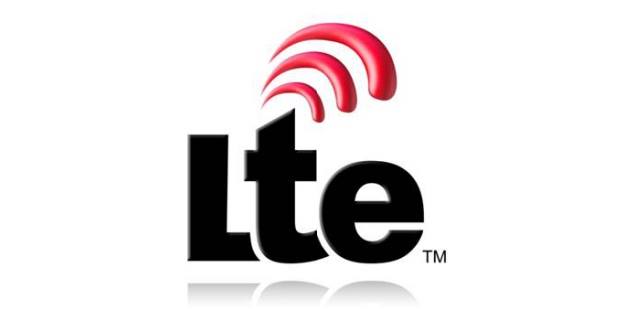The term “G” means generation. Therefore, you can easily understand that 5G is the most recent generation of cell phone network technology. While buying a mobile or willing to switch carriers, you can come across the terms LTE and the earlier.
These are phone networks, but much confusion about the technology exists. If you’re unsure whether you require more Long Term Evolution coverage or anything else, go through the article 5G Vs LTE. We have explained the differences in detail.
What is LTE?
LTE means “Long Term Evolution.” It is a marketing term used to signify progression toward true 4G. Regarding 4G Long Term Evolution networks, understand that these are weaker than true 4G. But this mobile network is better than simple 3G. Its International Standard is defined and frequently updated loosely.
In simple words, this network is an upgraded 3G. It can send data to 4G LTE phones at a rate lower than 100 Mbps. Besides, it has played a significant role in making the current 5th Generation standard, known as 5G New Radio. So if you want to manage 5th Generation data sessions (5G networks or non-standalone 5G), it needs a 4G LTE control plane.
The third-generation partnership project has invented and marketed the network as a 4G Long Term Evolution network. Besides, its download speed ranges from 50 to 100 Mbps. You can consider the data rate for its 4-generation. The network can provide a downlink of 300 Mbps and an uplink of 75 Mbps.
The network uses a multiuser form of the orthogonal frequency-division multiplexing (OFDM) modulation system for its downlink signal. We know it as orthogonal frequency-division multiple accesses (OFDMA). Single-carrier FDMA helps to transmit the uplink signal by reducing the transmit power required by the mobile terminal.
It is compatible with around 750 devices per base station. Besides, it can support an average of 250 devices per sector. In addition, the radio frequency is up to 6 GHz, and its bandwidth is around 20 MHz. Therefore, the latency comes in at about 50 milliseconds.
Companies have attained 4G speeds but are unwilling to advertise it. Customers think of it as an advanced version of 4G, not what it is. The quickest 4G options are 5Ge, 4G LTE-A, and 4G LTE+.
How does LTE Work?
The network helps to move big data packets to an internet protocol system (IPS). Previously, it used Code-division multiple access (CDMA) and the Global System for Mobile Communications (GSM) to move data. But these can move small data amounts only. So it can transfer more data and help to streamline your service.
You can use it to remove speed bumps on the road. Thus, it enables you to traffic to move faster. Lower transfer latency indicates fast data moving. It can do all the things possible with mobile devices, which slower speeds of earlier-generation cellular networks were unable to accomplish easily.
How Fast is LTE?
The range is between 3G’s average 3 Mbps and 4G’s 100 Mbps. This range can offer a vast range of potential speeds. On average, the download speeds can range between 12-30 Mbps, with quick speeds available in major towns.
What is 5G?
It is the new standard laid out by the ITU. The network can offer quicker speeds, lower latency, greater network capacity, and more reliability. Thus, you can connect with everyone virtually. In addition, it helps to leverage new technologies and expand into new frequency spectrums. This network standard needs at least 1 Gbps with one millisecond of latency.
Three types of networks are available: low-band, mid-band, and high-band. These are available with different speeds and latency rates. Like 4G, we couldn’t say that all fifth-generation networks are true 5G. The rollout began in early 2019 and might take many years to implement completely.
It can offer access to Virtual Reality and AR with more uniform and quicker data rates. This network can get a peak data rate of around 10 Gbps. In addition, it can expand new spectrums like mmWave.
Besides, you can get 10-year battery life for low-power devices. Moreover, the network can offer 100% area coverage for every device. It allows you to make ultra-low latency applications through multi-access computing (MEC).
In addition, it comes with a bandwidth of around 20 GHz. This network is compatible with about 1 million connected devices per square Kilometer. Besides, its ultra-low latency is less than ten milliseconds. It comes with a huge network capacity. Moreover, it can provide a minimum speed of around 1 to 20 Gbps.
According to the researchers, we can realize the complete impact of the network across the globe by 2035. It can provide advantages to many companies.
How does 5G work?
It offers new features, including network slicing, orthogonal frequency-division multiplexing (OFDM), massive multiple-input, and multiple outputs. Besides, the network can introduce another new standard, 5G New Radio (NR). It can replace the Long Term Evolution network because, using its capabilities, the NR will build off. Thus, it will provide new advantages. For example, it can offer increased energy savings for connected devices and enhanced connectivity.
The network operates on a new high-frequency spectrum — millimeter wave (mmWave). It ranges between 30 to 300 GHz, whereas 4G LTE’s wavelengths remain under 6 GHz. Therefore, the network needs new small cell base stations for the mmWave spectrum to function.
How Fast is 5G?
This network can increase download speeds. Thus, it helps to change how devices remain connected entirely. It offers a maximum of 20 Gbps and a minimum of 1 Gbps. But speeds can vary with different flavors.
Low-band networks are quicker than 4G. While moving up the spectrum, speeds get quicker. But you may find the range of the signal decreasing. If you connect to the high end of the fifth generation, you will get closer to actual fifth-generation speeds.
What advantages does 5G bring?
As we have mentioned earlier, the network can offer quicker speed for more spectrum availability. Thus, you can get more advanced radio technology. In addition, Els Baert said that it could offer much lower latency than 4G. He is the director of marketing and communications at NetComm.
The network lets you download and upload data much quicker than older technologies. It offers speeds between 1 and 10Gbps download speeds and one-millisecond latency. But it can provide minimum average download speeds of 50 Mbps and latency of 10ms. Of course, it depends on network coverage, the device you have connected to, and the number of people connected in your vicinity.
Due to the higher speeds, the network stands separate from others. The high frequencies come with very large bandwidths. Therefore, you can keep everyone connected in busy environments like stadiums. But if you want to complete it efficiently, it will rely on huge MIMO (multiple-input, multiple-output) and beamforming.
The base stations of the network can support 100 antennas. What is unique about the higher mmWave frequencies is that you can block them easily. Therefore, many antennas can cause greater interference. Beamforming helps to recognize the optimum route for every connected user. It can decrease interference. Thus, it helps to improve the chances of blocked signals reaching their intended recipient.
What is Gigabit Long Term Evolution network, and how does it work?
Gigabit Long Term Evolution network is a new technology that represents a vital stepping stone between 4th and fifth-generation standards. It is how you can get it. AT&T can label its 4G technology as 5G Evolution. In addition, it has pushed out its logos onto mobiles that are incompatible with the network.
Difference between 5G Vs LTE:
The major difference between 5G Vs LTE is that this technology appears after the 4G Long Term Evolution network to increase the speed. The fifth-generation network comes with a radio frequency of 30 to 300 GHz, whereas the Long Term Evolution network offers up to 6 GHz radio frequency. It is based on 4G technology.
- Fifth-generation comes with a radio frequency ranging from 30 GHz to 300 GHz. , But the Long Term Evolution network comes with a radio frequency of up to 6 GHz.
- 5G is the fifth generation, but the other one is the fourth generation.
- Fifth-generation can provide a speed of around 1 Gbps to 20 Gbps. But the other network can provide a speed rate of 50 Mbps to 100 Mbps.
- The bandwidth of the fifth-generation network is around 30 GHz, whereas the other network has a bandwidth of 20 MHz.
- Latency of fifth-generation is very low because it is less than ten milliseconds. But the latency of other networks is slightly longer at around 50 milliseconds.
The data rate for the fifth-generation network is about 10 Gbps. But the other network can provide a downlink of 300 Mbps and an uplink of about 75 Mbps. So the fifth-generation network allows you to connect to 1 million devices per square Kilometer. On the other hand, the other network enables you to connect to 750 devices per base station and around 250 devices per sector.
LTE Vs 5G: What is the future?
If you have good Long Term Evolution network coverage, you will not get many benefits from switching to a fifth-generation phone. According to Baert, you must have a top-quality connection with a decent speed as an average phone owner. The reason is that the service matters, after all, in the end, not the technology. But multiple people can get it with a 4G Long Term Evolution network. Moreover, many high-end users want higher speeds and lower latency.
For the fifth-generation network, the future can be driverless cars, wireless VR gaming, remote control robots, etc. But it will take time for the fifth generation to provide advantages for most people.
Apple had not released a 5G-capable iPhone until 2020. However, people have got many Android mobiles supporting fifth-generation networks. But it will not make much difference in your daily life if you live in an area getting early fifth-generation coverage. Now, the rollout of fifth-generation networks is gaining speed. Verizon, AT&T, T-Mobile, and Sprint have started offering fifth-generation networks in major towns. This list is increasing day by day.
However, we can say that we will need a phone supporting a fifth-generation network in the future. But many people can face trouble choosing between a 4G LTE iPhone or a fifth-generation Android. The good news is that it will complement 4G and Long Term Evolution network coverage. As a result, these will work together, ensuring you can get an improved connection.
Conclusion:
We use 4G LTE networks widely worldwide. But the fifth-generation network is new in the market. Moreover, it comes with a more advanced version. Therefore, it can soon become the global standard.
Frequently Asked Questions:
- Is LTE better than 5G?
It is possible to move huge data amounts using a fifth-generation network more efficiently. Therefore, you can download movies, shows, or video chat quickly.
- Why 5G instead of LTE?
The 5GE symbol indicates that your mobile is using advanced LTE technology. It is available on other carriers and is slower than the 10-gigabyte speeds.
- What are the disadvantages of 5G?
This network has limited global coverage. Besides, it is available in specific locations only. Therefore, cities can benefit from this network only. Furthermore, the expenses to set up tower stations are high than in other networks.






